- March 14th 2025
- CocoVolt
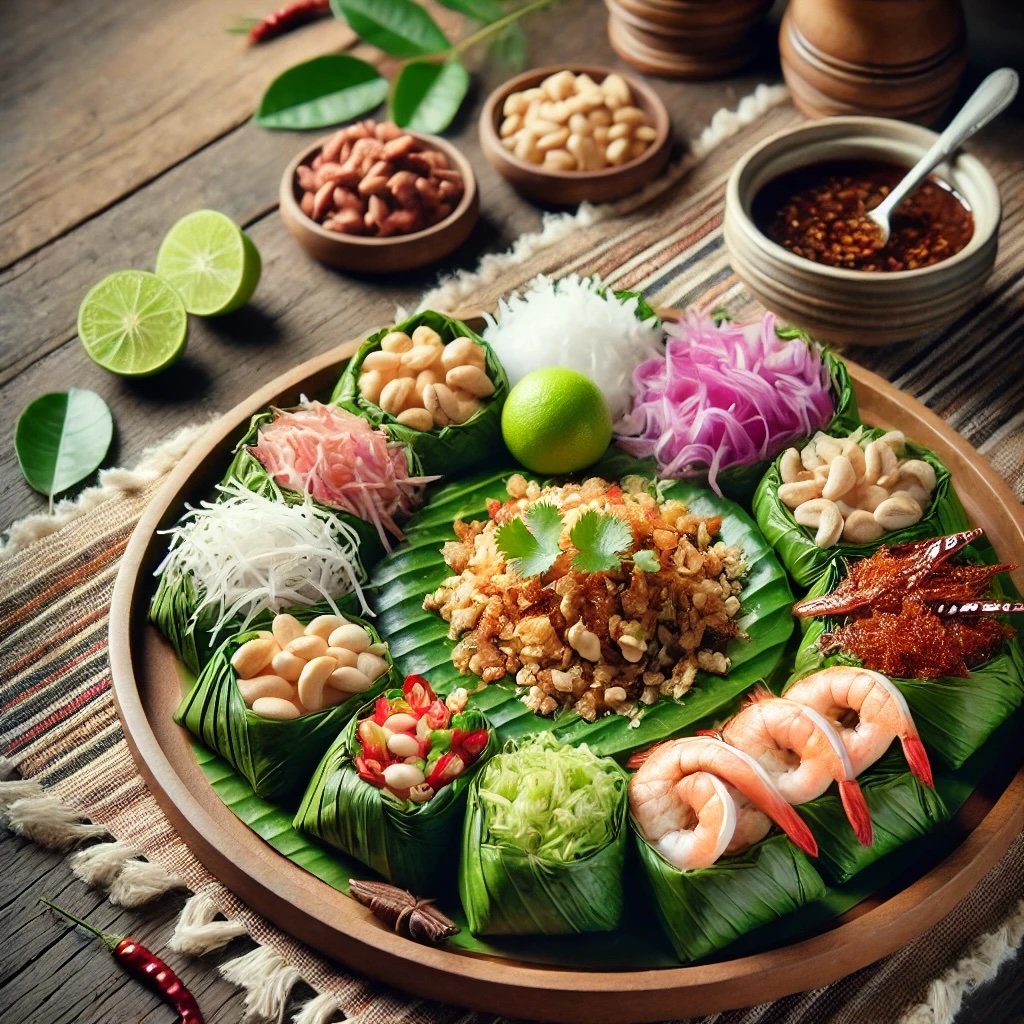
What to try and why You'll love it
Cocovolt's guide to Thai food
If you are not familiar to Thai dishes, it might be difficult to choose your dish when on a nightmarket or in a restaurant. Many of us end up eating the same dish over and over again not daring to try out new ones. It’s not easy – many times menus are only in Thai language and even if english, the names of the dishes don’t really tell the story about what you are about to eat. Thailand is a paradise for food lovers, offering a vast range of flavors that balance sweet, sour, salty, and spicy elements in every bite. For visitors, Thai cuisine is more than just street food and curries—it’s a cultural experience that reflects the country’s traditions, climate, and love for fresh ingredients. In this guide, I’ll introduce some of the must-try dishes, how they taste, what they are made of, and how they are cooked.
Basic vocabulary you can use in a restaurant
- Pii Khap : In Thai culture, calling someone “Pii” (พี่) is a friendly and respectful way to address someone older but not too much older. It’s commonly used when speaking to service staff, especially in informal settings like restaurants. As a foreigner using “Pii Khap” can sound polite and endearing, showing that you’re making an effort to use Thai respectfully. One could say Pii Khap could mean in english “Hey Brother” or “Hey sister”
- Khun Khap: Khun Khap is a polite phrase to use resembling “Excuse me”. Khun is a sign of respect and Khap translates roughly to “Please”. Khun Khap is generally neutral phrase and is appropriate to use in a more formal setting while Pii Khap suites an everyday situation where the person is a bit older than you.
- Kung: Means shrimp.
- Moo : Means Pork, which can be a bit confusing because we usually relate Moo to cows.
- Kai: means Chicken. the pronounciation in Thai language is tricky as then intonation of words may change the meaning of the word. Kai, when meaning chicken, is pronounced with lowering intoantion towards the end of the phrase.
- Pet: means spicy. If you want no spices, you would say “Mai Pet” (Mai meaning “no”). If you want very spicy food, you just say “Mak Pet” (Mak = very, Pet = Spicy)
So if you would like to have rice with minced pork meat and want to make it not very spicy, you would say “Pii Khap” (get attention) and then “Pad Krappao Moo Sap Mai Pet” (Pad KrapPao = a dish with rice + meat + egg , Moo Sap = Pork Minced, Mai = Not , Pet = Spicy)
Everyday Thai Dishes You Should Try
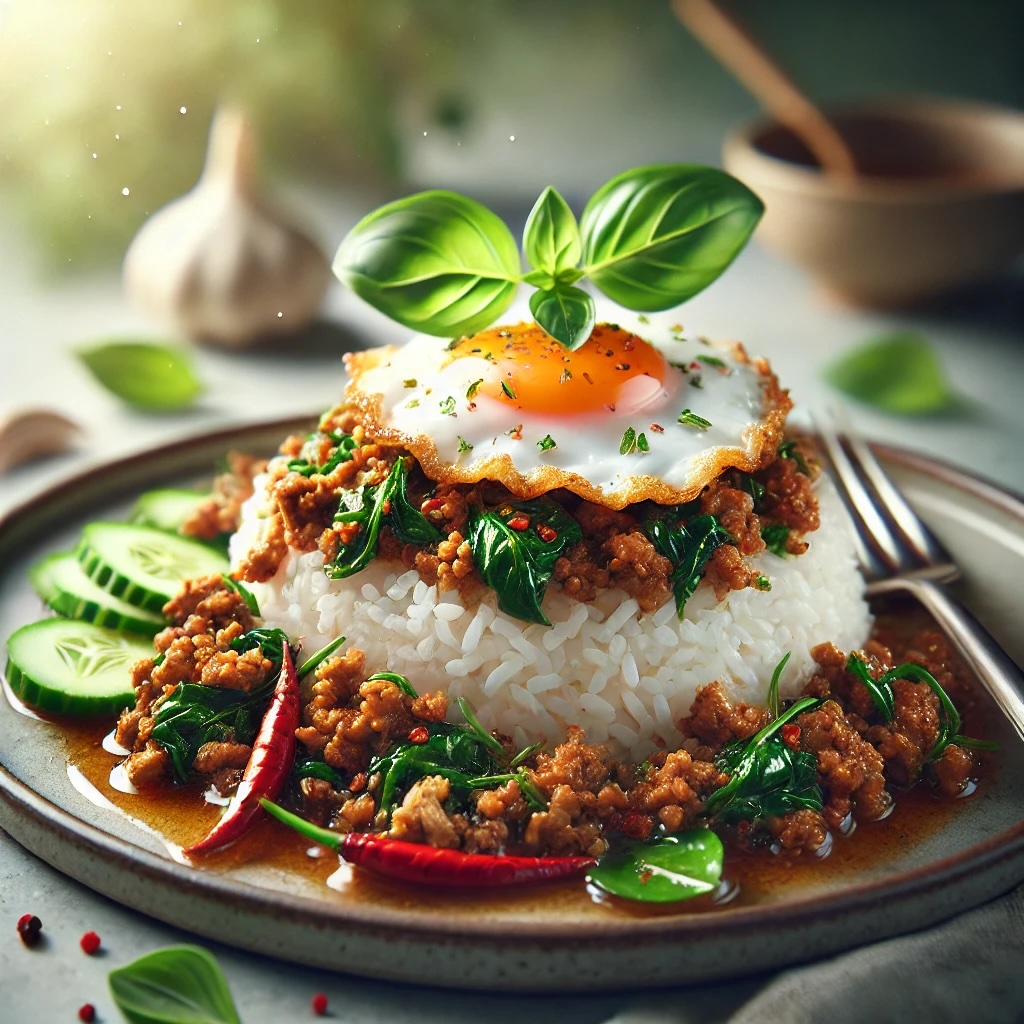
Pad Krapao (ผัดกะเพรา) - The Ultimate Thai Basil Stir-Fry:
A bold and flavorful stir-fried dish made with minced pork, chicken, or beef, cooked with garlic, chili, and Thai holy basil. The sauce combines fish sauce, oyster sauce, and a touch of sugar, creating a perfect balance of salty, spicy, and slightly sweet flavors. Often served over steamed jasmine rice with a crispy fried egg on top, it’s a go-to comfort food for locals and visitors alike. You can adjust the spiciness, but the real Pad Krapao packs a fiery kick! 🔥 Krapao is a very popular basic dish among the Thai nationals so it's easy to get it in almost every kitchen.
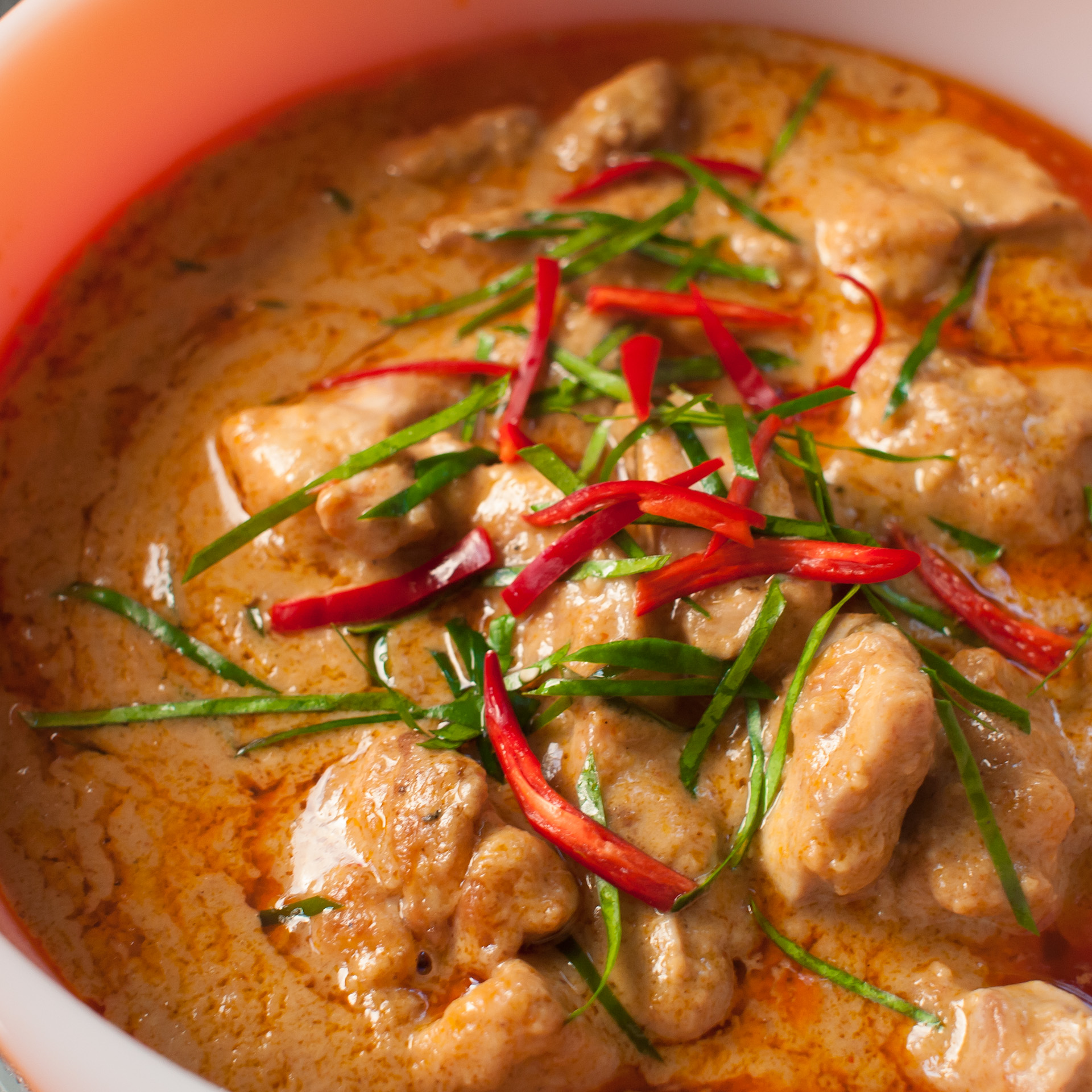
Phangan Curry - The Unique Southern Thai Coconut Curry
A rich and aromatic curry special to Koh Phangan, made with a blend of fresh local spices, creamy coconut milk, and tender meat or seafood. This dish is known for its deep, earthy flavor, enhanced by turmeric, lemongrass, kaffir lime leaves, and a hint of sweetness from palm sugar. Unlike the fiery southern curries, Phangan Curry strikes a perfect balance between mild heat and fragrant spices, making it a must-try for those who love bold yet comforting Thai flavors. Often served with steamed rice, it’s a true taste of island tradition. You will find it generally available, but as it takes some more effort to cook it than many other dishes, you might not find it in every restaurant.
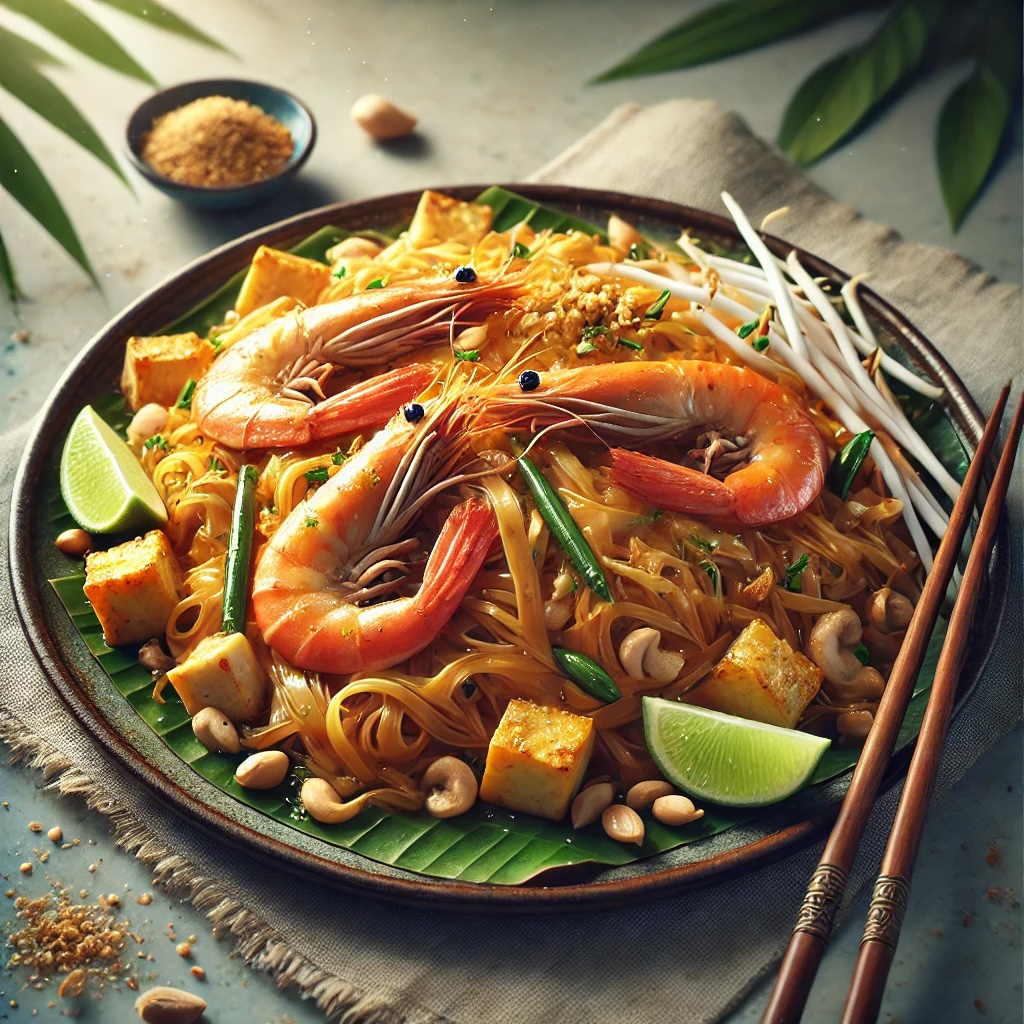
Pad Thai (ผัดไทย) - The Classic Noodle Dish
A well-loved stir-fried noodle dish made with thin rice noodles, eggs, tofu, shrimp or chicken, and garnished with peanuts, lime, and bean sprouts. The sauce is a perfect blend of tamarind, fish sauce, and palm sugar, giving it a mix of sweet, sour, and savory flavors. It’s lightly oily but incredibly flavorful, and you can adjust the spiciness with chili flakes. So many people love Pad Thai it's very easy to find in any kitchen.

Tom Yum Goong (ต้มยำกุ้ง) - The Spicy and Sour Soup
This world-famous Thai soup is both spicy and sour, made with fresh herbs like lemongrass, kaffir lime leaves, galangal, and chili paste. The addition of shrimp (Goong) and mushrooms makes it rich yet refreshing. It’s a fantastic dish for those who enjoy bold flavors with a citrusy kick.
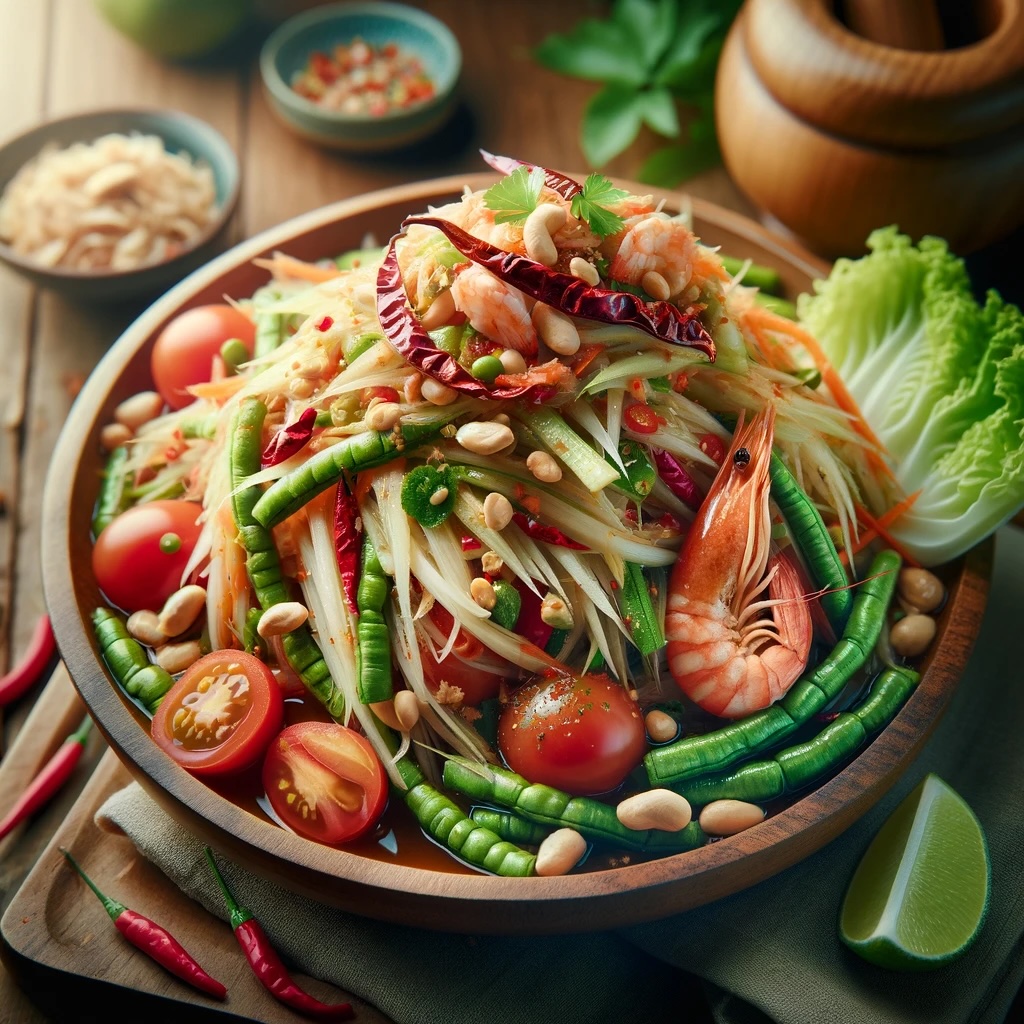
Som Tam (ส้มตำ) - Papaya Salad with a Kick
This shredded papaya salad is a perfect balance of sweet, sour, salty, and spicy flavors. It includes ingredients like tomatoes, long beans, peanuts, dried shrimp, and chilies, all pounded together in a mortar and pestle. The crunchiness of the papaya combined with the strong, tangy dressing makes it a favorite among locals and tourists alike.

Khao Pad (ข้าวผัด) – Thai Fried Rice
A simple but delicious dish of stir-fried rice with egg, garlic, and a choice of meat or seafood. Often served with fresh lime and cucumber, it’s a mild dish suitable for those who prefer less spice. The key to its flavor is the balance of soy sauce, fish sauce, and aromatics.
Unique Thai Dishes You Shouldn’t Miss on Koh Samui
While Thailand has a variety of well-known dishes, some local specialties are must-tries on Koh Samui. These dishes bring out the island’s rich culinary heritage and use ingredients native to the region.

Miang Kham (เมี่ยงคำ) – A Flavor Explosion in a Leaf
A lesser-known but delightful dish, Miang Kham is a do-it-yourself snack where you wrap various ingredients inside a betel leaf. These ingredients typically include roasted coconut, peanuts, dried shrimp, shallots, lime (with the peel!), ginger, and chili, all drizzled with a sweet tamarind sauce. Each bite is a surprising mix of flavors and textures—salty, sweet, spicy, and crunchy all at once. It’s a true taste adventure! Miang Kham might not be so easy to come by on Samui. One of the places serving it can be found on the hills of Nathon at Organic Farm & Coffee shop.
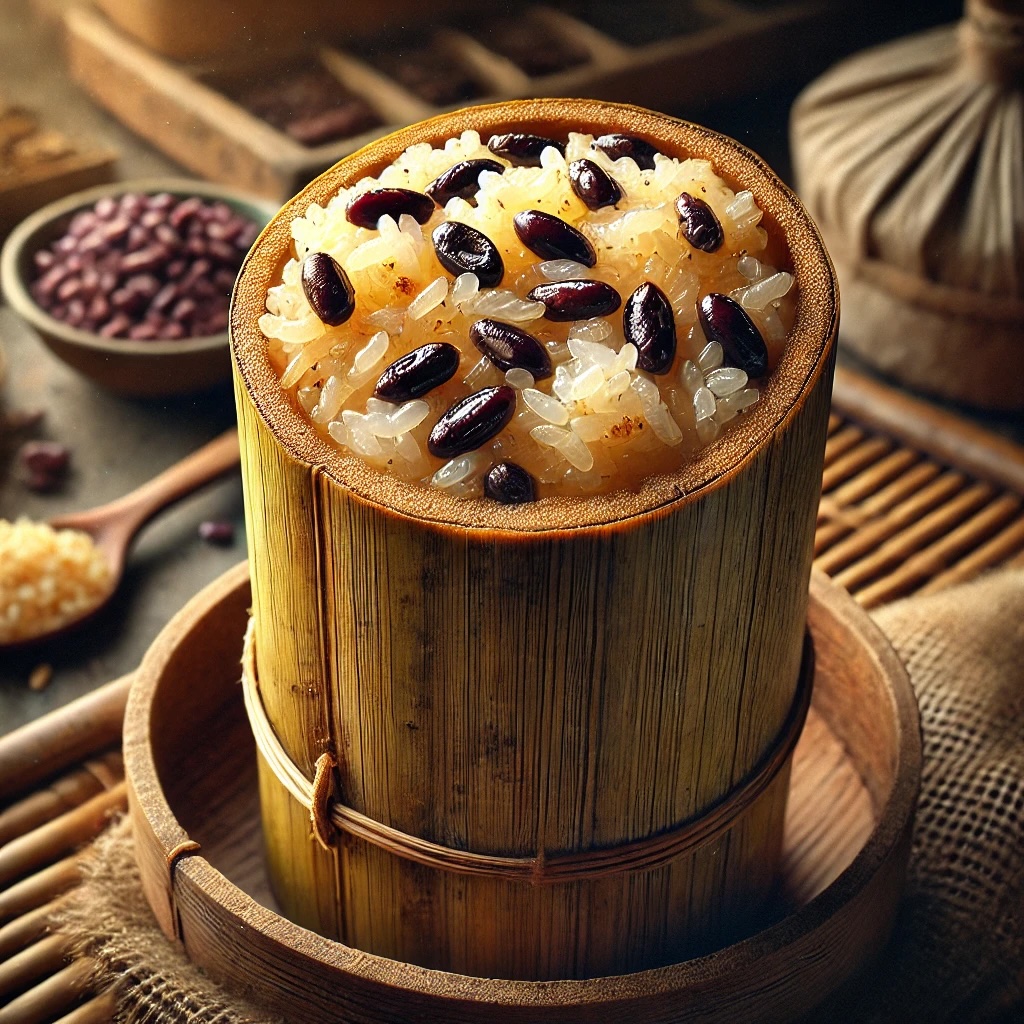
Khao Lam (ข้าวหลาม) – Sticky Rice Cooked in Bamboo
A special dish that is both delicious and unique to southern Thailand, Khao Lam is sticky rice mixed with coconut milk and black beans, then packed inside a bamboo tube and slowly roasted over a fire. The result is a sweet, fragrant, slightly smoky rice pudding with an earthy touch from the bamboo. It’s a wonderful snack or dessert, often sold at markets or roadside stalls or at nightmarkets.
Final Thoughts: Embrace the Adventure
Trying Thai food is about more than just eating—it’s about experiencing Thailand’s vibrant culture through its flavours. Whether you’re indulging in a fiery Tom Yum, snacking on a bite of Miang Kham, or savouring the sweetness of Khao Lam, each dish tells a story of tradition and local expertise.
If you’re visiting Koh Samui, make sure to explore local markets and small family-run eateries for the best authentic flavours. Don’t be afraid to try something new—Thai food is meant to surprise and delight your taste buds!
